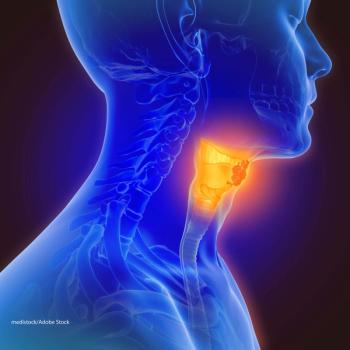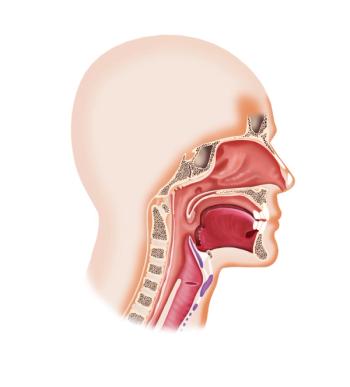
In Intermediate-Risk Nasopharyngeal Cancers, PET/CT Appropriate for Detecting Distant Metastases
Researchers in China have found that the use of [18F] fluorodeoxyglucose PET/CT detected a greater number of distant metastases than conventional work-up imaging in patients with nasopharyngeal carcinoma.
Researchers in China have found that the use of [18F] fluorodeoxyglucose positron emission tomography/computed tomography (PET/CT) detected a greater number of distant metastases than conventional work-up (CWU) imaging in patients with nasopharyngeal carcinoma. However, given the cost of PET/CT, the researchers indicated that the greatest benefit of using the emerging technology was in patients classified as intermediate risk with N2-3 disease and Epstein Barr virus (EBV) DNA levels of 4,000 copies/mL or more.
The study was
According to Mai, the use of PET/CT to detect distant metastases in patients with nasopharyngeal carcinoma has been slow to be adopted clinically, despite the fact that 2011 NCCN guidelines recommend its use for patients with type 2-3/N2-3 disease. Instead, CWU is still widely used in certain areas because it is available and affordable.
“The main topic of this study was to identify the nasopharyngeal carcinoma patient subgroup that would achieve the most benefit from applying PET/CT imaging for detecting metastases by combining pretreatment EBV DNA level, TNM staging, and costs,” Mai said.
The researchers conducted a prospective study with 583 patients enrolled. Patients had PET/CT, CWU, and EBV DNA level assessment performed before undergoing treatment.
Distant metastases were detected in 14.8% of patients; 82.6% were detected using PET/CT and 36% were detected using CWU. Fourteen patient’s metastases were missed by both methods.
A multivariate analysis indicated that advanced N stage nearly tripled the risk for distant metastases (OR = 2.689; 95% CI, 1.894–3.818) and a pretreatment EBV DNA levels more than tripled the risk (OR = 3.344; 95% CI, 1.825–6.126).
“Combining the N stage and pretreatment EBV DNA stratified the whole nasopharyngeal carcinoma population intro three risk groups, that is, very low risk, low risk, and intermediate risk,” Mai said.
Data indicated that the use of PET/CT was not superior to CWU in detecting distant metastases in patients with very low-risk disease. However, PET/CT was superior to CWU in patients with low-risk disease (P = .039) and intermediate-risk disease (P < .001).
The researchers also looked at how often the results of the PET/CT resulted in a change of treatment regimen. Changes to treatment occurred in 2.9% of very low-risk patients, 6.3% of low-risk patients, and 16.5% of intermediate patients.
Finally, the costs per true-positive case detected by PET/CT for the intermediate group ($5,005) was much cheaper compared with the very low-($47,458) and low-risk ($14,188) groups.
“Our study showed that the largest benefit in terms of cost and patient management was observed in the subgroup with N2-3 disease and EBV DNA ≥ 4,000 copies/mL,” Mai said. “We suggest modifications to the NCCN guidelines and recommend a CWU for the very low-risk population, CWU or PET/CT for the low-risk population, and PET/CT for the intermediate-risk NPC population.”
In an
“The limitation of the cohort design is that there is no independent reference standard; the tests under study are used to define the outcome,” they wrote. “Because PET-CT diagnosed more than twice as many patients with distant metastases as did [CWU], it is likely that the added value of PET-CT is overestimated.”
However, the authors also congratulated the researchers on their approach to the study and their efforts to identify the subgroup of patients for whom PET/CT would be of most benefit.
“Avoiding PET-CT in situations with low yield allows additional resources for patients who will likely benefit,” Levine and Julian wrote. “The insights provided by their study can also be generalized to other countries that are struggling with the burden of health costs related to new technologies.”
Newsletter
Stay up to date on recent advances in the multidisciplinary approach to cancer.





